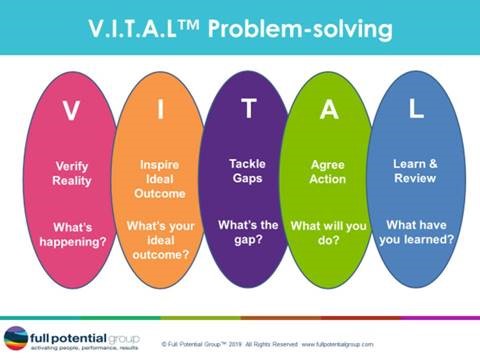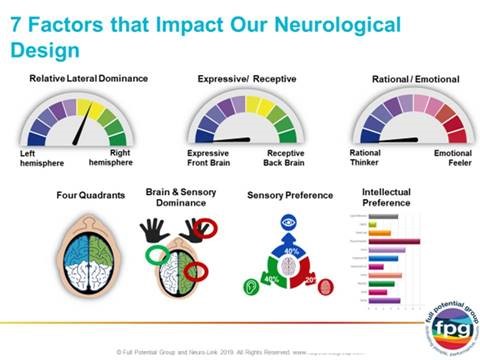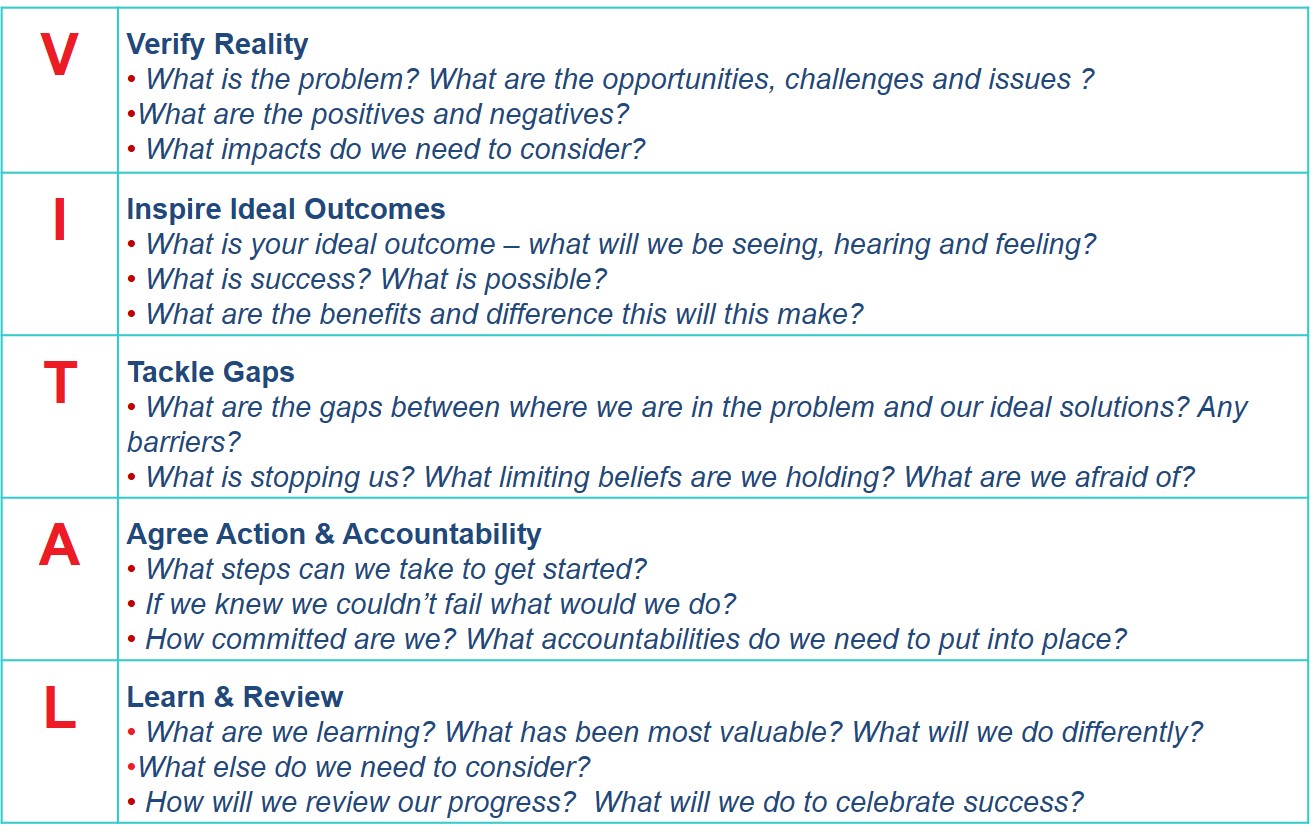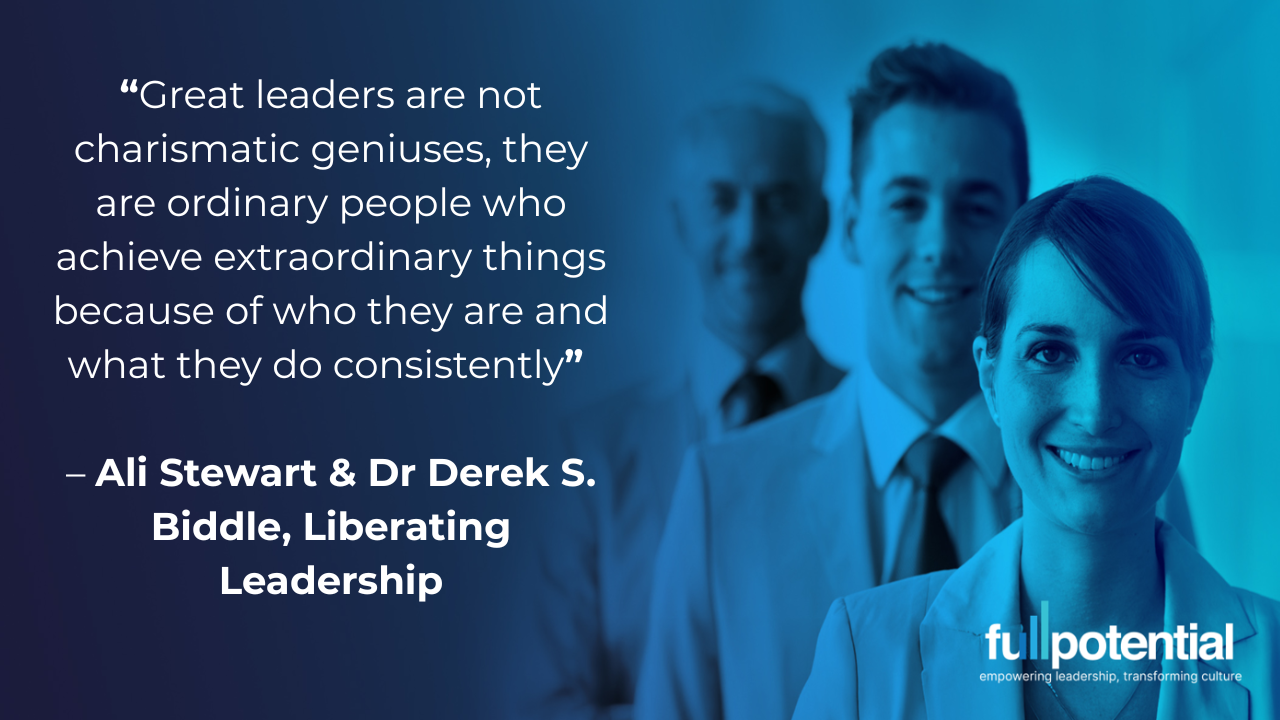3 steps to problem-solving – faster, better, simpler

Problem-solving is the number one quality people most want from their leaders in 2020 according to LinkedIn research. An overwhelming 68% of professionals surveyed cited problem-solving, above time management 44%, and empathy at 38% as the critical leadership quality. For those of you who would prefer to watch a video on the three steps, you can view my recording below otherwise, scroll past the video to continue reading the article. https://vimeo.com/384835733
What distinguishes human’s competitive advantage from artificial intelligence, is the alignment of our HEAD, HEART and GUT. Our intellect, emotions and intuitions.
The Head brain has the potential to naturally perform cognitive processes like making predictions and forecasts about future situations, creating new solutions, performing counterfactual thinking (the ability to imagine what can be and identify alternative outcomes), recognising patterns, experimenting and reflecting, learning, creating and solving problems in sophisticated ways, like nothing else in the universe.
The Heart brain has a complex intrinsic neural network of its own, that operates independently from the head and focuses on leveraging motivational and emotional intelligence.
Finally, the Gut brain also contains a separate, fully functioning neural network that performs its own independent processing. It is a synthesizer of collective intelligence, engendering ‘gut feel’, intuition and more transformative problem-solving.
Aligning our head, heart and gut in the problem-solving process, gives us the capability to become powerful beyond measure.
3 steps to problem-solving – faster, better, simpler – activate your head, heart and gut:
Faster, use your HEAD – Boost your brainpower, improve your neuro-agility and use a VITAL problem-solving process
Better, engage your HEART – Know your motivators and inner drivers, so you get to the heart of the problem effectively
Simpler, connect with your GUT – Use mindfulness to quieten your mind, make the space for simplicity and trust your intuition for the best results
1. Faster, use your HEAD – Boost your brainpower, improve your neuro-agility and use a VITAL problem-solving process
Neuroscience proves that our brains have unlimited potential. You can solve problems faster by harnessing your own brainpower and improving your neuro-agility. People who are neuro agile have the flexibility to solve problems, learn new skills, attitudes and behaviours faster and more easily. Neuro agility is about the readiness of all the senses and brain regions to function as one integrated whole brain system, being receptive and responsive to receive and transmit bio-chemical impulses at optimum capacity under new and potentially stressful conditions. You can dramatically improve your problem-solving ability by having a greater understanding of the 7 factors that make up your own unique neurological design. Get your own Neuro-agility profile for clear measures.
If you are more right-brain dominant you’ll solve the problem better by considering it more holistically, thinking outside the box and with pictures. If you have a left-brain dominance, however, the problem will be solved more quickly using a logical, detailed, fact-based and structured approach. If you stimulate the front of your brain more readily and have an expressive dominance, you’ll solve the problem better by thinking aloud, expressing your thoughts and discussing them with other people. If however, you stimulate the back, more receptive part of your brain first, you’ll appreciate quiet time to absorb all the information, consider the details and integrate your learning by yourself.
If you’re an auditory learner, listening a relevant podcast, to appropriate music (or needing silence) will help you solve the problem quicker. A visual learner might want to sketch out a picture or diagram to make sense of the problem, watch a video and visualise the solution; a kinaesthetic learner will need to roll up their sleeves and ‘Touch’ the problem, get involved and experience the problem to fast-track a solution.
Your brain fitness is important if you want to excel at problem solving. The norm for brain fitness is 48%, great problem-solvers have brain fitness scores of closer to 70% and beyond. Brain fitness is about utilising all brain regions simultaneously as one functional integrated system. People are not born brain fit. It is something we need to develop
Whole brain utilisation is significantly improved by doing regular physical activities such as swimming, dancing, football, aerobics, tennis and exercise involving cross-lateral movements. Stretching at work, having meetings standing up and also stimulating both sides of your brain with mental activities, games, puzzles, music and humour makes a huge difference. Most activities in life require bilateral (two sided) functioning as using both eyes and ears require us to be able to cross the midline.
Try this brain fitness exercise. https://vimeo.com/384858261
Problem solving is easier for many people if you have a model or process to follow. The VITAL model to help you consider the problem fully and move quickly and efficiently to a better solution. 
2. Better, engage your HEART – Know your motivators and inner drivers, so you get to the heart of the problem effectively
The electronic signal of the heart is sixty times higher in amplitude than the signal of the head brain, which explains why, even though you can intellectually evaluate a problem on its pros and cons, unless your heart and feelings agree with your proposed solution, you will find yourself reticent to take action. The heart emits an energy field 5,000 times stronger than the head, and in research, can be measured 3 metres away from the body. This explains why other people can pick up emotions you are feeling, as your own body communicates beyond itself and impacts others. In leading others, it’s important to be aware of how you are feeling about a problem, as your heart will give you away and may influence the decisions taken.
When leaders connect with their heart energy, breakthroughs can occur in their emotional feelings about a problem and solution. The prime functions of the heart brain are emotional processing and relational effect.
Understanding your (and other people’s)motivational drivers and deeper values, results in stronger feelings either positive or negative, which provide greater confidence in how to resolve a problem. Your motivators are your energy. They are your inner drivers that determine how you feel and how you act. Mapping your motivation gives you a blueprint that measures your emotional drivers, underpinning your natural problem-solving, allowing you to drive better solutions. Knowing your top 3 motivators and using them to facilitate the way you think about a problem, brings better analysis and clarity to the situation.
For example, if your top 3 motivators are Searcher, Builder and Defender, as you solve a problem your Searcher will be looking for the real meaning and purpose behind the problem, wanting to evolve a worthwhile solution that adds greatest value to those involved. The builder in you will want to ensure the solution is commercially viable, there are clear goals and relevant steps to achieve the best result, and your Defender driver will ensure you consider a safe, secure solution that will bring stability to the outcome. You can get your own Motivational Map on our website.
3. Simpler, connect with your GUT – Use mindfulness to quieten your mind, make the space for simplicity and trust your intuition
The secret to great problem-solving lies not just in the head or heart brain, but also your ‘gut brain’. This comes from a deep sense within, but also from beyond the 
Gut brain intuition communicates through metaphor, symbolism and body sensations. When it leaks out into the body, we get a sense of it in areas of tightness, tingling or other sensations in our stomach, chest and other body parts. Asking yourself what sensations you feel in your body when discussing a problem is a good start.
Mindfulness is a potential silver bullet to accessing your gut brain and simplifying problem-solving. Steve Jobs is said to have placed huge importance on mindfulness and spoke about how it influenced his designs. You can practise mindfulness by sitting quietly and focusing on your breathing for two minutes. 
Through mindfulness practice, you are able to notice how your mind itself is operating, and therefore create space to choose to respond in a different way. If you don’t control your mind, it can go all over the place. Mindfulness makes problem-solving simpler, as you are less reactive, more in touch with your emotions and intuition to come up with the best solution. Slowing down for a couple of hours every week, meditating for 20 minutes every day and taking the time to recall dreams are all valuable ways of boosting the power of our gut brains.
Healthy eating, drinking water and taking regular exercise positively stimulate the gut and will impact the quality of your problem-solving.
The best problem-solving occurs when leaders learn how to utilise and align all three ‘brains’ – head, heart and gut, in the most effective way possible. If you would like any further information or have any questions or feedback, please do get in touch.












